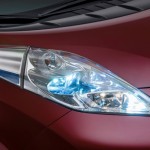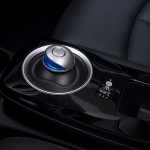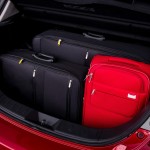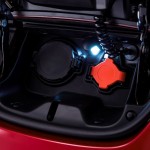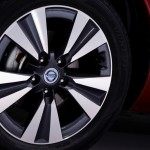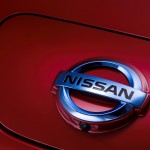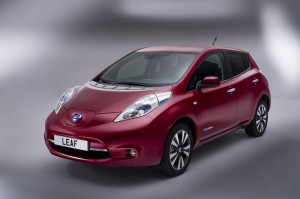
Significant changes under the skin mark the next phase in the electric vehicle revolution as Nissan LEAF production reaches Europe
- Integrated motor and charger for better packaging
- More space, better seats, more equipment
- Chassis re-engineered for Europe
- Greater real-world driving range
- Quicker charging with 6.6kW charger option
- Wider range of European built models
In its short, two and a half year life so far, the Nissan LEAF has revolutionised the way we think about our future mobility. As the world’s first purpose-designed 100 per cent electric car from a major manufacturer, Nissan LEAF has proven that zero-emission mobility is not a dream but reality.
There are now more than 54,000 examples driving around the world in near silence and emitting no tailpipe emissions at all. Many can be found in busy city centres – some as taxis – where the lack of emissions is making a genuine and important contribution to air quality.
Even though LEAF was one of the most advanced cars available on the market, progress doesn’t stand still. Now comes the new generation Nissan LEAF. And while it might look broadly similar to the pioneering original, significant improvements under the skin make an even more compelling argument for battery-powered cars.
There are more than 100 changes to be found on New Nissan LEAF, some major, some minor. All, however, combine to make the pioneering original an even better car. New LEAF has a greater driving range, a larger boot, more comfort, more interior space and more choice.
Some of the changes have been driven by feedback from LEAF’s early adopters, the enthusiastic band of owners who are almost evangelical in their praise for the car and for zero emission mobility.
And the changes coincide with a move to global production. Where the original was built only in Japan, New Nissan LEAF is also built in North America and in Europe.
Among the changes are:
- Extended real-world driving range
- Faster 6.6kw charging option cutting charging time in half
- Subtle styling changes to the grille for better aerodynamic efficiency
- Fully integrated motor and charger frees up extra luggage space
- Weight reduction averaging 32kgs
- Chassis retuned to suit European driving conditions
- Revised seats for more comfort and more interior space
- Improved CarWings features with Eco-Routing and enhanced remote control features
- Three versions – Visia, Acenta and Tekna
- More available equipment including leather trim and Around View Monitor
- Wider colour range
- New range of wheel options
“The global success of Nissan LEAF has proven beyond doubt that zero-emission electric vehicles are viable and that far from being a gamble, as some of our rivals suggested, our decision to push ahead with battery-powered vehicles will help secure personal mobility for future generations,” said Paul Willcox, senior vice president, Sales and Marketing, Nissan Europe.
“LEAF is just the first pure electric vehicle planned by Nissan and will be joined soon by e-NV200 in both light commercial and passenger vehicle forms. We are also developing a pure electric, dedicated Taxi version of NV200 as well as a compact EV from Infiniti.
“These new models and the expansion of LEAF production will help keep Nissan’s place as the global leader in zero emissions technology. But these are still early days for the technology and more, much more, needs to be done by governments across the globe to improve the charging infrastructure and to agree on global standards for fast chargers if electric vehicles are to fulfil their very real potential,” he added.
But the multi-award winning Nissan LEAF is not restricted to within the city walls. Rapid growth in fast charging networks means ‘corridors of power’ can now be found along major routes in Asia, Europe and North America where they link major urban areas and allow EV converts to use their Nissan LEAF as normal every day transport.
Quick chargers deliver 50 kW of high voltage direct current (DC) to the depleted battery via a special safety approved connector. They are capable of replenishing a battery to around 80 per cent of its capacity in 30 minutes allowing longer journeys to be undertaken without range issues intervening.
European production of New Nissan LEAF began at the company’s highly efficient plant in Sunderland, UK at the end of March with sales starting from mid 2013.
Source; The New Nissan Leaf – Press Release
